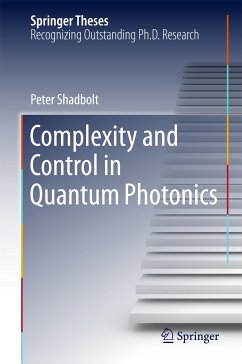
Open Quantum Systems (eBook, PDF)
An Introduction
Versandkostenfrei!
Sofort per Download lieferbar
60,95 €
inkl. MwSt.
Weitere Ausgaben:

PAYBACK Punkte
30 °P sammeln!
In this volume the fundamental theory of open quantum systems is revised in the light of modern developments in the field. A unified approach to the quantum evolution of open systems is presented by merging concepts and methods traditionally employed by different communities, such as quantum optics, condensed matter, chemical physics and mathematical physics. The mathematical structure and the general properties of the dynamical maps underlying open system dynamics are explained in detail. The microscopic derivation of dynamical equations, including both Markovian and non-Markovian evolutions,...
In this volume the fundamental theory of open quantum systems is revised in the light of modern developments in the field. A unified approach to the quantum evolution of open systems is presented by merging concepts and methods traditionally employed by different communities, such as quantum optics, condensed matter, chemical physics and mathematical physics. The mathematical structure and the general properties of the dynamical maps underlying open system dynamics are explained in detail. The microscopic derivation of dynamical equations, including both Markovian and non-Markovian evolutions, is also discussed. Because of the step-by-step explanations, this work is a useful reference to novices in this field. However, experienced researches can also benefit from the presentation of recent results.
Dieser Download kann aus rechtlichen Gründen nur mit Rechnungsadresse in A, B, BG, CY, CZ, D, DK, EW, E, FIN, F, GR, HR, H, IRL, I, LT, L, LR, M, NL, PL, P, R, S, SLO, SK ausgeliefert werden.













